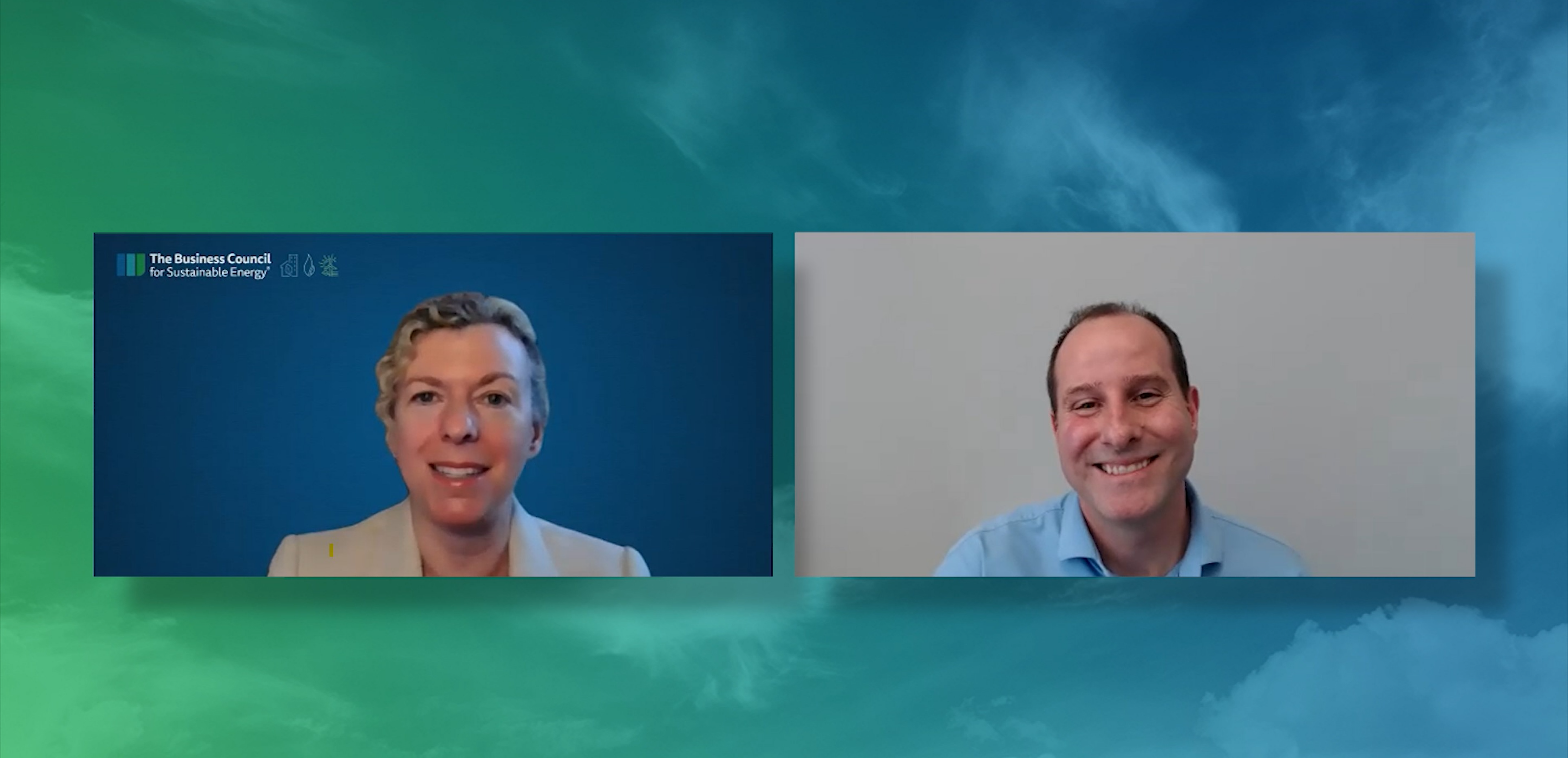In celebration of the Business Council for Sustainable Energy’s 30th Anniversary, the Solutions for a Net-Zero Economy interview series promotes the leadership and innovation of clean energy businesses and the membership of BCSE. Featured speakers will showcase the broad range of technologies available to achieve sustainability objectives and a net zero economy.
By Bob Hinkle, CEO, Metrus Energy
A host of recent reports, including BCSE’s 2023 Sustainable Energy in America Factbook and the IPCC’s Climate Change 2023: Synthesis Report, indicate that we’re well behind in global emission reduction goals for hitting Paris Agreement targets. And while daunting, there is a way forward to get us back on track, namely: (1) by focusing on energy efficiency; and (2) by mobilizing private sector finance.
In the United States, energy efficiency alone can save more than 50 percent of the greenhouse gas (GHG) emissions needed to achieve national climate goals. Globally, energy efficiency can help the world reduce over 40 percent of the emissions needed to hit the targets of the Paris Agreement. Unlike other supply-side energy resources, energy efficiency is ready to deploy now. There are no complications with permitting or requirements to build transmission lines. Energy efficiency should be the global answer to “where do we start?”
The 2050 target of reaching net zero simply cannot be accomplished without an enormous influx of private sector investment in general and energy efficiency investments specifically. According to the International Energy Agency (IEA), annual investments in clean energy need to more than triple to $4 trillion by 2030. Close to 70 percent will be driven by private sector investment.
Metrus is a pioneer in creating the market for Energy-as-a-Service (EaaS), founded over 14 years ago to finance and implement energy efficiency upgrades in the same way that supply-side energy projects are developed — by using third-party financing and ownership solutions like solar Power Purchase Agreements. With Metrus, we deliver energy efficiency “as-a-service” by: (1) funding 100 percent of the upfront cost of a project, (2) owning the assets, and (3) billing customers based on measured energy savings using a cost per unit-of-energy-saved services charge set below what a customer would otherwise pay for consumed energy.
EaaS is a catalyst for getting decarbonization projects funded that might otherwise get pushed out or not done at all, given its ability to:
- Unlock the energy savings potential within the built environment. Projects are implemented with no upfront cost and payments are performance-based, reflecting the realized savings from a project.
- Fund a wish list of upgrades by strategically bundling different energy technologies in a single project.
The overall result is greater savings and accelerated GHG reductions.
To date, the greatest barrier to mass adoption is doing nothing. Customers have a lot of competing needs and energy efficiency and GHG reductions aren’t always at the top of the list. 2030 or 2050 net zero goals are not always today’s priority. Another barrier is the lack of knowledge that financing solutions (like EaaS) exist that can unlock energy savings to fund an energy upgrade project and achieve sustainability targets.
Energy efficiency is often referred to as “the first fuel,” which reflects its importance in the world’s journey to net zero (and keeping global warming at 1.5 degrees Celsius). The solution has never been more clear; now we need to take action, instilling a general understanding of the value of decarbonization and investing in energy efficiency at scale.

